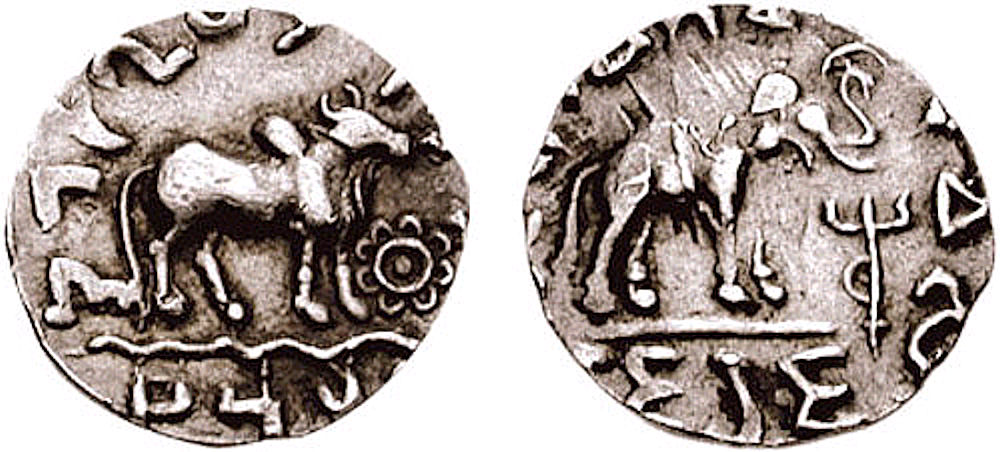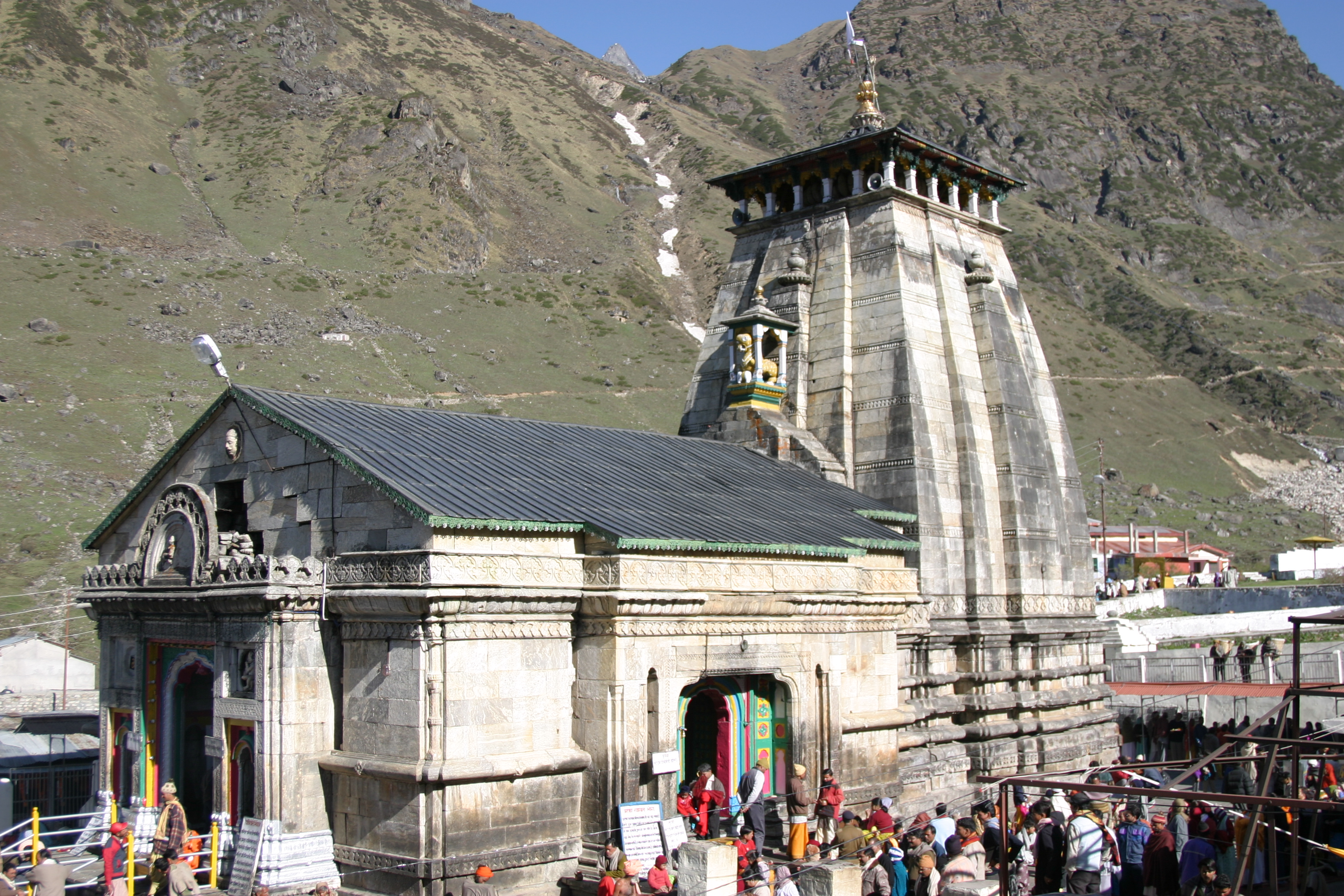|
Vemaka
The Vemaka were an ancient Indian tribe, located north of the larger tribe of the Kuninda in northern India. They are known for their coins, as the silver coins of the Kunindas, the Vemakas and the Audumbaras closely follow the coins of the Indo-Greek king Apollodotus II Apollodotus II (Greek: ) was an Indo-Greek king who ruled in the western and eastern parts of Punjab. Bopearachchi dates him to c. 80–65 BC, and R. C. Senior to c. 85–65 BC. Apollodotos II was an important ruler who seems to have re-establis ... in their characteristics (weight, size and material).Rapson, E. J., 'Ancient India, from the earliest times to the first century, A.D', p.155. Cambridge University Press 1914. References History of Uttarakhand Bactrian and Indian Hellenistic period {{India-ethno-stub ... [...More Info...] [...Related Items...] OR: [Wikipedia] [Google] [Baidu] |
Audumbaras Coin 1st Century BCE
The Audumbras, or Audumbaras (Hindi;ओदुम्बर) were a north Indian tribal nation east of the Punjab, in the Western Himalaya region. They were the most important tribe of the Himachal, and lived in the lower hills between Sirmaur, Chamba and Yamuna. They issued coinage from the 1st century BCE, when they seemingly gained independence from the Indo-Greeks. The silver coins of the Kunindas, the Vemakas and the Audumbaras closely follow the coins of Apollodotus II in their characteristics (weight, size and material). Their coins were found in the area of Pathānkot District . Their favorite deities were Mahādeva or Shiva, and also Kārtikeya, standing with a spear in right hand. They are also known as Audumbara or Audumbatira. It is a name of the tribe. They are the same people as the Odemboerce of Pliny. Hist Nat VI 23. Professor Lassen mentions them as the name of the people of Kutch of Gujarat state. They appear in the Ganapatha of Panini of 5th Century B.C. K K ... [...More Info...] [...Related Items...] OR: [Wikipedia] [Google] [Baidu] |
Audumbaras
The Audumbras, or Audumbaras (Hindi;ओदुम्बर) were a north Indian tribal nation east of the Punjab region, Punjab, in the Western Himalaya region. They were the most important tribe of the Himachal Pradesh, Himachal, and lived in the lower hills between Sirmaur district, Sirmaur, Chamba, Himachal Pradesh, Chamba and Yamuna. They issued coinage from the 1st century BCE, when they seemingly gained independence from the Indo-Greeks. The silver coins of the Kunindas, the Vemakas and the Audumbaras closely follow the coins of Apollodotus II in their characteristics (weight, size and material). Their coins were found in the area of Pathankot, Pathānkot District . Their favorite deities were Mahādeva or Shiva, and also Kartikeya, Kārtikeya, standing with a spear in right hand. They are also known as Audumbara or Audumbatira. It is a name of the tribe. They are the same people as the Odemboerce of Pliny. Hist Nat VI 23. Professor Lassen mentions them as the name of the p ... [...More Info...] [...Related Items...] OR: [Wikipedia] [Google] [Baidu] |
Kuninda
The Kingdom of Kuninda (or Kulinda in ancient literature) was an ancient central Himalayan kingdom documented from around the 2nd century BCE to the 3rd century, located in the southern areas of modern Himachal Pradesh and far western areas of Uttarakhand in northern India and Doti Gadwall in Nepal. Kingdom The history of the kingdom is documented from around the 2nd century BCE. They are mentioned in Indian epics and Puranas. The Mahabharata relates they were defeated by Arjuna. One of the first kings of the Kuninda was Amoghbhuti, who ruled in the mountainous valley of the Sutlej and Yamuna rivers (in today's southern Himachal and far western Uttarakhand in northern India). The Greek historian Ptolemy linked the origin of the Kuninda to the country where the rivers Beas, Sutlej, Yamuna and Ganges originate.Ptolemy, ''Geography'' 7.1.42: ὑπὸ δὲ τὰς Βιβάσιος καὶ τοῦ Ζαράδρου καὶ τοῦ Διαμούνα καὶ τοῦ Γάγγου ἡ ... [...More Info...] [...Related Items...] OR: [Wikipedia] [Google] [Baidu] |
Indian Tribes Between The Indus And The Ganges
Indian or Indians may refer to: Peoples South Asia * Indian people, people of Indian nationality, or people who have an Indian ancestor ** Non-resident Indian, a citizen of India who has temporarily emigrated to another country * South Asian ethnic groups, referring to people of the Indian subcontinent, as well as the greater South Asia region prior to the 1947 partition of India * Anglo-Indians, people with mixed Indian and British ancestry, or people of British descent born or living in the Indian subcontinent * East Indians, a Christian community in India Europe * British Indians, British people of Indian origin The Americas * Indo-Canadians, Canadian people of Indian origin * Indian Americans, American people of Indian origin * Indigenous peoples of the Americas, the pre-Columbian inhabitants of the Americas and their descendants ** Plains Indians, the common name for the Native Americans who lived on the Great Plains of North America ** Native Americans in the Uni ... [...More Info...] [...Related Items...] OR: [Wikipedia] [Google] [Baidu] |
India
India, officially the Republic of India (Hindi: ), is a country in South Asia. It is the seventh-largest country by area, the second-most populous country, and the most populous democracy in the world. Bounded by the Indian Ocean on the south, the Arabian Sea on the southwest, and the Bay of Bengal on the southeast, it shares land borders with Pakistan to the west; China, Nepal, and Bhutan to the north; and Bangladesh and Myanmar to the east. In the Indian Ocean, India is in the vicinity of Sri Lanka and the Maldives; its Andaman and Nicobar Islands share a maritime border with Thailand, Myanmar, and Indonesia. Modern humans arrived on the Indian subcontinent from Africa no later than 55,000 years ago., "Y-Chromosome and Mt-DNA data support the colonization of South Asia by modern humans originating in Africa. ... Coalescence dates for most non-European populations average to between 73–55 ka.", "Modern human beings—''Homo sapiens''—originated in Africa. Then, int ... [...More Info...] [...Related Items...] OR: [Wikipedia] [Google] [Baidu] |
Indo-Greek
The Indo-Greek Kingdom, or Graeco-Indian Kingdom, also known historically as the Yavana Kingdom (Yavanarajya), was a Hellenistic period, Hellenistic-era Ancient Greece, Greek kingdom covering various parts of Afghanistan and the northwestern regions of the Indian subcontinent (parts of modern-day Pakistan and northwestern India). This kingdom was in existence from ca. 200 BC to ca. 1 BC. During its existence the kingdom was ruled over by 30 successive kings. Menander I, being the most well known amongst the Indo-Greek kings, is often referred to simply as ''“Menander,”'' despite the fact that there was indeed another Indo-Greek King known as Menander II. Menander I's capital was at Sagala in the Punjab region, Punjab (present-day Sialkot). The kingdom was founded when the Graeco-Bactrian king Demetrius I of Bactria, Demetrius (and later Eucratides I, Eucratides) invaded India from Bactria in 200 BC. The Greeks in the Indian Subcontinent were eventually divided from the G ... [...More Info...] [...Related Items...] OR: [Wikipedia] [Google] [Baidu] |
Apollodotus II
Apollodotus II (Greek: ) was an Indo-Greek king who ruled in the western and eastern parts of Punjab. Bopearachchi dates him to c. 80–65 BC, and R. C. Senior to c. 85–65 BC. Apollodotos II was an important ruler who seems to have re-established the Indo-Greek kingdom to some extent of its former glory. Taxila in western Punjab was reconquered from nomad Scythian rule. Rule Apollodotus II seems to have been a member of the dynasty of Menander I, since he used their typical deity Athena Alkidemos on most of his silver, and also Menander's title ''Soter'' (Greek: , "the Saviour"), on all his coins. On some coins, he also calls himself ''Philopator'' (Greek: , "the father-loving"), which proves that his father had been king before him. R C Senior guesses that Amyntas or Epander could have been his father. Apollodotus' reign possibly began in the Punjab, when the Scythian king Maues ruled in Gandhara and its capital Taxila. What probably happened is that Apollodotus II took ... [...More Info...] [...Related Items...] OR: [Wikipedia] [Google] [Baidu] |
History Of Uttarakhand
Uttarakhand is a state in North India. Its name, which means "northern land" or "section" or "northern part" in Sanskrit, is mentioned in early Hindu texts as the combined region of Kedarkhand and Manaskhand. In the Puranas, Uttarakhand was the ancient term for the central Indian Himalayas. Its peaks and valleys were known as Svarga loka: a temporary abode of the righteous, and the source of the Ganges. At that time, present-day Uttarakhand was also reportedly inhabited by rishis and sadhus. Uttarakhand is known as "the land of the gods" (''Devbhumi'') because of its number of Hindu pilgrimage sites. During the Vedic period, several small republics known as Janapada existed in this region. The Pauravas, Kushanas, Kunindas, Guptas, Katyuris, Palas, Chands, Parmars (or Panwars), and the British have ruled the state by turns. Early history The region was settled by the Kol people, who speak Munda language. They later joined Indo-Aryan tribes who arrived by the Vedic period. ... [...More Info...] [...Related Items...] OR: [Wikipedia] [Google] [Baidu] |

.png)


